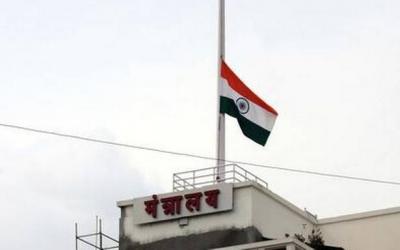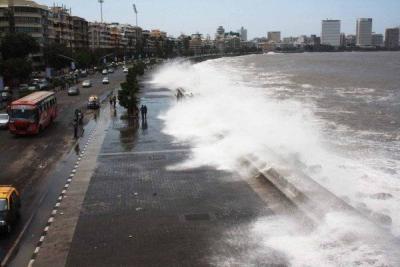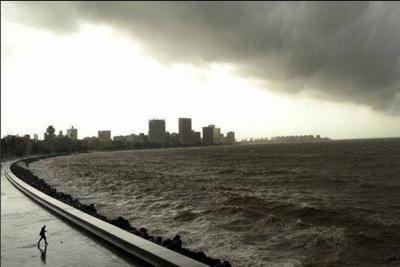80% of Nariman Point, Cuff Parade will be under water by 2050 says, BMC chief
By Lokmat English Desk | Published: August 28, 2021 06:19 PM2021-08-28T18:19:02+5:302021-08-28T18:19:02+5:30

By 2050, 80 per cent of Nariman Point and Mantralaya will be under water and about 70 per cent of the city’s A, B, C and D wards, which cover major parts of south Mumbai, will be submerged due to rise in the sea level, BMC Commissioner Iqbal Singh Chahal said on Friday.

Speaking at the launch of Mumbai Climate Action Plan website, Chahal said: “We are getting warnings from nature (extreme weather events like heavy rainfall) and if we do not wake up, it will be a dangerous situation for the next 25 years.

And it will not only be the next generation but the current generation will also suffer.”

The areas he spoke of included around 80 per cent of Cuffe Parade, Mantralaya in Churchgate and Nariman Point. Localities like Umarkhadi, Mohammad Ali Road, Marine Lines, Girgaon and Breach Candy, all in island city, are also set to face flooding up to 70 per cent by 2050 due to climate change.

“Earlier, we used to hear about climate change events like melting glaciers but it was not directly affecting us. But now it has come to our doorstep,” said Chahal.

Last February, a report from McKinsey India had stated that by 2050, Mumbai will see a 25 per cent increase in the intensity of flash floods and a 0.5 metre rise in the sea level, which will affect two to three million people living within 1 km radius of the coastline.

Experts have also warned that extreme rainfall events will become more frequent in Mumbai.

“In the last 15 months, there have been three cyclones. On August 5, 2020, many parts of south Mumbai were submerged in up to 5-ft of water due to heavy rain. In recent years, Mumbai has been witnessing at least two to three days of extreme rainfall during monsoon. This year alone, on July 16 and 18, Mumbai recorded over 235 mm and 253 mm of rainfall, respectively, within a few hours leading to flooding in many parts of the city. It also faced the first extremely severe cyclonic storm Tauktae.

There was no cyclone warning that day but the situation was like a cyclone,” Chahal said while recounting flooding at Marine Drive and Girgaon Chowpatty. He added that the city is witnessing extreme weather events like heavy rain in very less time. This year, 70 per cent of July’s average rainfall was received in just four days – from July 17 to 20. In May, while the average rainfall is zero, 200 mm of rainfall was recorded due to cyclone.























